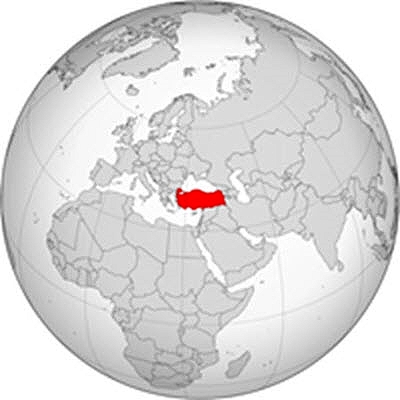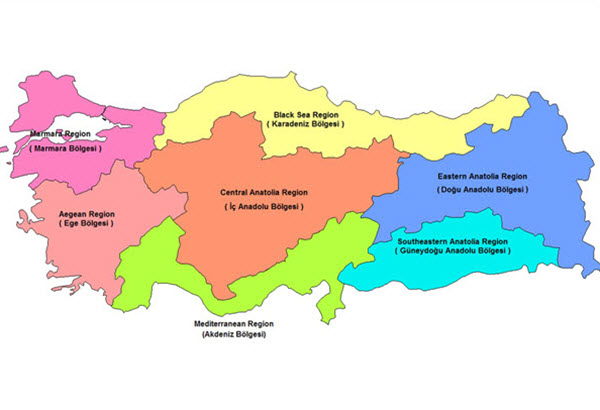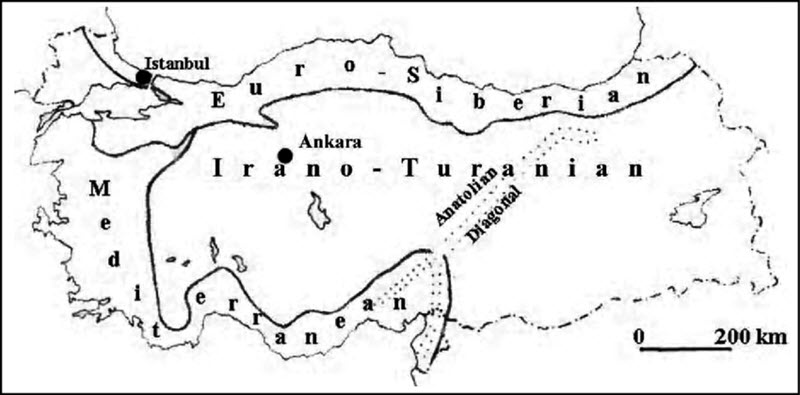Most people don’t know that Turkey has the richest biodiversity in the temperate zone. I would like to share some interesting information explaining this fact. I will share more about Turkey in the blog.
Click to visit the Hike’n Sail BLOG

Although Turkey covers 0.6% of the earth by land, 2.6% of the world’s flora exists in Turkey.
As seen in the chart Brasil has the highest number of vascular plants in the world and followed by Colombia with a small difference. Turkey has a 22nd place with nearly 10.000 species. Please note that Brasil is twice as big as Colombia and 16 times bigger than Turkey by land.
As seen in this chart Turkey has the highest number of vascular plants in Europe followed by Italy & Greece by a big difference.
The third chart shows the endemism levels of some European countries, where Turkey exceptionally has 35% endemism in Europe and Antalya stands out as one of the 81 provinces in Turkey and with more endemic plants than most European countries.
Below you will see the reasons, why Turkey has such outstanding diversity.
5 Reasons Why Turkey Has Such A Rich Biodiversity
1 – Geological and geo-morphological variety.
Turkey is a predominantly mountainous country, and true lowland is confined to the coastal fringes. About one-fourth of the surface has an elevation above 4,000 feet (1,200 meters), and less than two-fifths lies below 1,500 feet (460 meters). Mountain crests exceed 7,500 feet (2,300 meters) in many places, particularly in the east. Steep slopes are common throughout the country, and flat or gently sloping land makes up barely one-sixth of the total area. These relief features affect other aspects of the physical environment, producing climates often much harsher than might be expected for a country of Turkey’s latitude and reducing the availability and productivity of agricultural land. Structurally, the country lies within the geologically young folded-mountain zone of Eurasia, which in Turkey trends predominantly east to west. The geology of Turkey is complex, with sedimentary rocks ranging from Paleozoic to Quaternary, numerous intrusions, and extensive areas of volcanic material. Four main regions can be identified: the northern folded zone, the southern folded zone, the central massif, and the Arabian platform.
7 main soil groups may be distinguished in Turkey, each containing several soil types.
- Red and gray-brown podzolic soils, along with brown forest soils, represent the most extensive group, covering about one-third of the country.
- Brown and reddish-brown soils are characteristic of the driest parts of the country.
- Noncalcic brown soils with rendzinas and grumusols are found in slightly wetter climates.
- Chestnut soils are found on a smaller scale
- Serozems—highly alkaline semidesert gray soils—are found in the driest areas
- Terrarossas and red prairie soils are the products of limestone weathering under Mediterranean climates;
- Alluvial soils, which cover only a small portion of the country, are the most valuable type and support the most-intensive agriculture.
Turkey’s relief features and climatic variations produce major contrasts in soil types between the interior and the periphery.
(REF: ENCYCLOPÆDIA BRITANNICA)
2 – Various climatic zones and diverse geographical regions.
Turkey stretches from Asia towards Europe creating a peninsula. Turkey has a total of 8.333 km (5205 miles) coastline, 2805 km (1753 miles) along the Aegean Sea, 1695 km (1060 miles) along the Black Sea, 1600 km (1000 miles) along the Mediterranean and 927 km (580 miles) around the Marmara Sea, plus the islands.
Turkey has 7 diverse geographical regions.
1 – Marmara Region.
2 – Black Sea Region.
3 – Central Anatolian Region.
4 – East Anatolian Region.
5 – Southeastern Anatolian Region.
6 – Mediterranean Region.
7 – Aegean Region.
3 – Abundant water resources, such as lakes, rivers, long coastline.
4 – High altitudes up the 5165 m (17.000 feet).
5 – Different types of habitats. 3 major phytogeographical regions intersect in Turkey.
Turkey is located in three biogeographical regions:
1 – Anatolian (Irano – Turanian)
2 – Mediterranean
3 – Black Sea region (Euro-Siberian)
and their transition zones. Its climatic and geographical features change within short intervals of space due to the country’s position – a bridge between two continents. Thanks to its location, Turkey’s biological diversity can be compared to that of a small continent: the country’s territory consists of forests, mountains, steppe, wetlands, coastal and marine ecosystems, and different forms and combinations of these systems.
Anatolian Diagonal
The Anatolian diagonal is a theoretical dividing line (a biogeographical barrier) that runs diagonally across central and eastern Turkey from the northeastern corner of the Mediterranean Sea to the southeastern corner of the Black Sea and roughly cuts across part of the course of the upper Euphrates River within Turkey’s borders.
Many species of plants that existed west of the diagonal were not present to the east, while others found to the east were not present to the west although there were no physical, geological, or climatic differences or changes in a soil type that could account for the phenomenon. Not only does the Anatolian diagonal form a barrier to floral biodiversity, but about four hundred species of plants are endemic to this diagonal and are found nowhere else.
* Thanks to Assoc.Prof.Dr. Sırrı Yüzbaşıoğlu, who has given an extensive botany class to a group of licensed guides for adventure travel and allowed me to use some of his charts.






